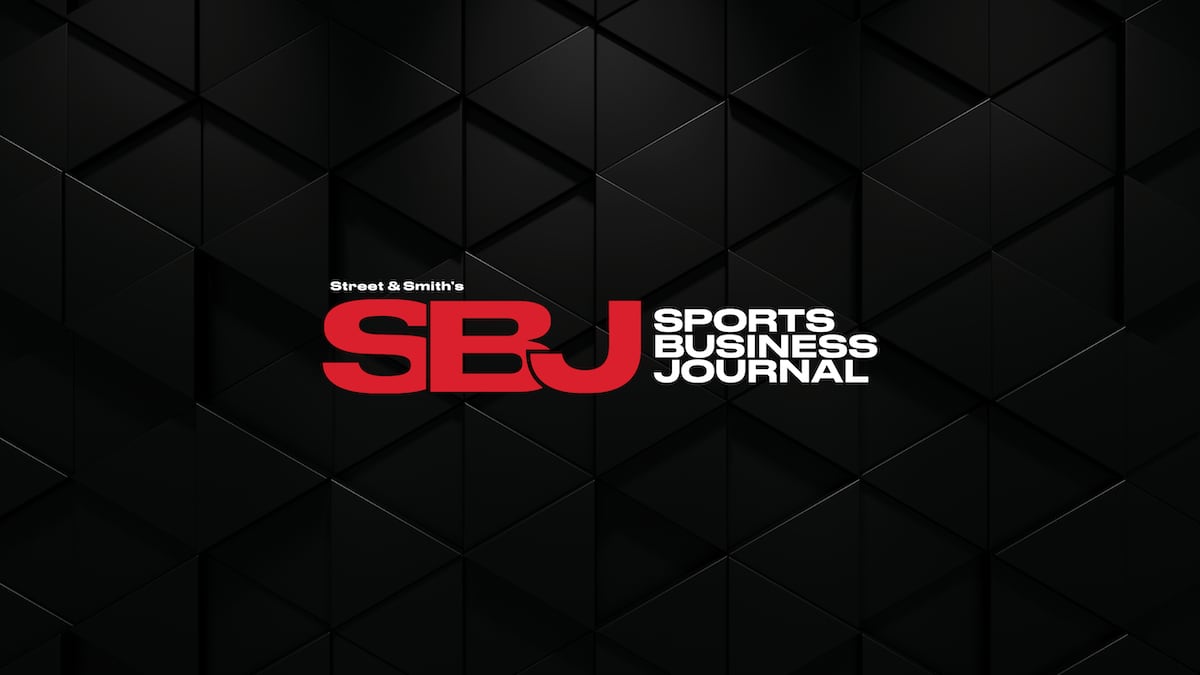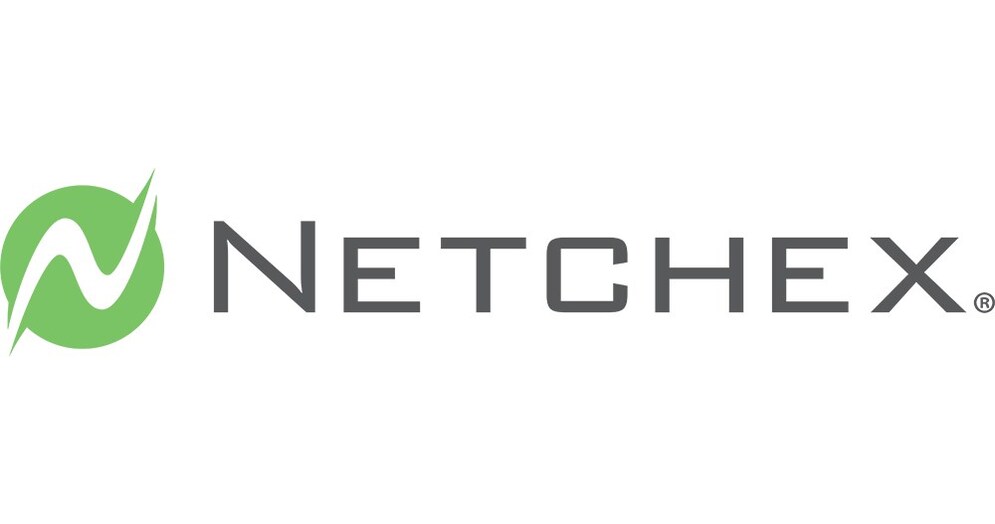Technology
LAFC’s BMO Stadium becomes first MLS venue to use goal-line technology
Goal-line technology was used for the first time in an MLS stadium last weekend. FIFA installed the technology — along with Video Assistant Referee (VAR) and semi-automated offside technology systems — at BMO Stadium on Saturday, host venue for the FIFA Club World Cup play-in game between LAFC and Mexican giant Club América. Hawk-Eye Innovations […]

Goal-line technology was used for the first time in an MLS stadium last weekend.
FIFA installed the technology — along with Video Assistant Referee (VAR) and semi-automated offside technology systems — at BMO Stadium on Saturday, host venue for the FIFA Club World Cup play-in game between LAFC and Mexican giant Club América.
Hawk-Eye Innovations was the provider used for all three systems, with 30 cameras positioned around the system. The firm was recognized as one of SBJ’s 10 Most Innovative Sports Tech Companies in 2024.
Technology
Emerging Trends Influencing The Growth Of The Sports
Sports Hospitality We’ve updated all our reports with current data on tariff changes, trade developments, and supply chain shifts affecting key industries. How Big Is the Sports Hospitality Market Size Expected to Be by 2034? In recent times, the sports hospitality market has witnessed considerable growth. The market, valued at $12.04 billion in 2024, is […]


Sports Hospitality
We’ve updated all our reports with current data on tariff changes, trade developments, and supply chain shifts affecting key industries.
How Big Is the Sports Hospitality Market Size Expected to Be by 2034?
In recent times, the sports hospitality market has witnessed considerable growth. The market, valued at $12.04 billion in 2024, is projected to reach $14.01 billion in 2025, reflecting a compound annual growth rate (CAGR) of 16.4%. A variety of factors have fueled this growth during the historic period, including an upward shift in disposable income, ever-increasing interest in premium sports experiences, amplified corporate involvement in hospitality, expansion of global sports events, and the evolution of fan engagement strategies.The size of the sports hospitality market is anticipated to experience swift expansion in the upcoming years. The projected growth rate indicates an increase to $25.48 billion by 2029, with a compound annual growth rate (CAGR) of 16.1%. The projected augmentation in this period is credited to factors such as the escalating engagement of fans digitally, surging demand for tailor-made hospitality experiences, increased application of AI and analytics in the realm of sports hospitality, burgeoning investments in smart stadium technology, and the revolution of sponsorship and partnership modalities. The significant trends in the forecast period consist of progressive VIP and opulent seating amenities, advancements in immersive applications like AR and VR, the adoption of cashless and non-contact payment methods, significant sustainability campaigns in sports venues, and the advent of AI-enabled customization of fan experiences.
Purchase the full report for exclusive industry analysis:
https://www.thebusinessresearchcompany.com/purchaseoptions.aspx?id=21592
What Are the Emerging Segments Within the Sports Hospitality Market?
The sports hospitality market covered in this report is segmented –
1) By Product Type: Food And Beverage, Lodging, Events, Other Product Types
2) By Channel: Events At Venue, Official Hospitality Packages, Secondary Market Platforms, Hospitality Marquees And Boxes, Hotel Packages, Other Channels
3) By Technology: Mobile Applications, Augmented Reality (AR), Data Analytics, Virtual Reality (VR), Contactless Solutions
4) By End-User: Individual Consumers, Corporations, Sports Organizations, Event Management Companies
Subsegments:
1) By Food And Beverage: In-Stadium Catering, VIP Dining Packages, Concession Stands, Hospitality Suites Catering, Themed Sports Bars And Restaurants
2) By Lodging: Sports-Themed Hotels, Luxury Accommodations For Athletes And Fans, Team And Staff Accommodations, Event-Based Lodging Packages, Fan Villages And Temporary Lodging
3) By Events: Corporate Hospitality Packages, VIP And Premium Seating Experiences, Athlete Meet-and-Greet Events, Sports Tournaments And Fan Engagement Events, Pre-Game And Post-Game Hospitality
4) By Other Product Types: Sports Travel And Tour Packages, Merchandise And Memorabilia Experiences, Exclusive Club Memberships, Training Camps And Sports Clinics
Get your free sample here:
https://www.thebusinessresearchcompany.com/sample.aspx?id=21592&type=smp
What Long-Term Drivers Are Shaping Sports Hospitality Market Trends?
The expansion of the sports hospitality market is predicted to be spurred on due to the increasing engagement of fans in sports. Fan involvement refers to the emotional bond and communication developed between sports teams, athletes or occasions, and their admirers, encouraged via immersive experiences, digital avenues, and involvement within the community. The surge in sports fans engagement is spurred on by digital modernization, social media, immersive experiences, and customized content that intensifies the connection between supporters and teams. Sports hospitality enhances fan involvement by offering exclusive experiences, premium access, and bespoke services that augment fan loyalty and engagement. For example, in 2023, it was noted by the Sports Events and Tourism Association (ETA), an American non-profit trade organization for sports events and tourism, that over 200 million people traveled for a variety of sporting events, collegiate championships, and youth and adult amateur sports. Thus, the broader engagement of fans in sports is facilitating the expansive growth of the sports hospitality market.
Who Are the Top Competitors in Key Sports Hospitality Market Segments?
Major companies operating in the sports hospitality market are Sodexo Group, Delaware North, Creative Artists Agency, IMG Worldwide LLC, ATPI Ltd., Legends International, Wasserman, Dorna Sports, Octagon, Sportfive, RK Sports Hospitality, Keith Prowse, On Location Experiences, Byrom, QuintEvents, STH Group, RTR Sports Marketing Ltd, Hospitality Finder, White Label Hospitality, DTB Sports Hospitality and Event Management Limited.
What Sports Hospitality Market Trends Are Gaining Traction Across Different Segments?
Prominent players in the sports hospitality industry are focusing on innovative solutions like the seamless customer portal to enrich the experience of fans. This technological innovation aims to simplify the ticketing process, VIP entries, tailored services, and real-time interaction opportunities. The seamless customer portal is essentially a digital platform that consolidates ticketing, hospitality, and personalised services to enrich the enjoyment of fans effortlessly. As an example, in February 2025, Vision4Sport, a sports marketing and hospitality company based in the UK, incorporated a website to boost its top-tier sports hospitality services. The overhauled platform provides enhanced user experience, superior navigation, and an efficient booking process. It has comprehensive event details, exclusive hospitality packages, on-the-spot bookings, and upgraded customer support. Vision4Sport offers bespoke sports tourism experiences, including VIP viewing, luxury accommodation, and exclusive access to backstage areas at significant sporting events. The objective of this enhancement is to ramp up customer engagement and simplify the booking procedure for sports lovers and corporate customers.
Get the full report for exclusive industry analysis:
https://www.thebusinessresearchcompany.com/report/sports-hospitality-global-market-report
Which Regions Are Becoming Hubs for Sports Hospitality Market Innovation?
North America was the largest region in the sports hospitality market in 2024. Asia-Pacific is expected to be the fastest-growing region in the forecast period. The regions covered in the sports hospitality market report are Asia-Pacific, Western Europe, Eastern Europe, North America, South America, Middle East, Africa.
Frequently Asked Questions:
1. What Is the Market Size and Growth Rate of the Sports Hospitality Market?
2. What is the CAGR expected in the Sports Hospitality Market?
3. What Are the Key Innovations Transforming the Sports Hospitality Industry?
4. Which Region Is Leading the Sports Hospitality Market?
Why This Report Matters:
Competitive overview: This report analyzes the competitive landscape of the 3D imaging software market, evaluating key players on market share, revenue, and growth factors.
Informed Decisions: Understand key strategies related to products, segmentation, and industry trends.
Efficient Research: Quickly identify market growth, leading players, and major segments.
Connect with us on:
LinkedIn: https://in.linkedin.com/company/the-business-research-company,
Twitter: https://twitter.com/tbrc_info,
YouTube: https://www.youtube.com/channel/UC24_fI0rV8cR5DxlCpgmyFQ.
Contact Us
Europe: +44 207 1930 708,
Asia: +91 88972 63534,
Americas: +1 315 623 0293 or
Email: mailto:info@tbrc.info
Learn More About The Business Research Company
With over 15,000+ reports from 27 industries covering 60+ geographies, The Business Research Company has built a reputation for offering comprehensive, data-rich research and insights. Our flagship product, the Global Market Model delivers comprehensive and updated forecasts to support informed decision-making.
This release was published on openPR.
Technology
How Germany Treads Alongside Monaco, Scotland, Italy, North Macedonia, Croatia, Denmark, and Norway in the New Sports Tourism Revolution in 2025?
Home » TRAVEL NEWS » How Germany Treads Alongside Monaco, Scotland, Italy, North Macedonia, Croatia, Denmark, and Norway in the New Sports Tourism Revolution in 2025? Wednesday, June 18, 2025 Europe has long been a hub for sports tourism, with its rich history of sporting events and passionate fanbases. As the continent continues to recover […]

Wednesday, June 18, 2025

Europe has long been a hub for sports tourism, with its rich history of sporting events and passionate fanbases. As the continent continues to recover from the global disruptions of the past few years, sports tourism is rapidly evolving, with new trends and innovative approaches making 2025 a milestone year for the sector. From cutting-edge technology to sustainable practices and luxurious experiences, sports tourism in Europe is taking on a whole new dimension in 2025.
The Emergence of Sustainable Sports Tourism in 2025
Sustainability is no longer a trend; it’s a necessity, especially in an era where travelers are increasingly aware of their environmental footprint. Europe has embraced this challenge, with many countries and event organizers implementing sustainable initiatives to reduce the impact of major sports events on the environment. From eco-friendly stadiums to carbon-neutral operations and green transportation options, 2025 sees a concerted effort to integrate sustainability into sports tourism.
Sustainable Venues and Green Initiatives
In 2025, major sporting venues across Europe are being redesigned with sustainability in mind. Countries like Germany and the UK have made substantial investments in energy-efficient stadiums, which use renewable energy sources, incorporate waste-reduction technologies, and prioritize water conservation. This move aligns with broader European Union goals to achieve carbon neutrality by 2050, with sports tourism being an important focus area.
For example, the 2025 Summer World University Games hosted in the Rhine-Ruhr region of Germany is implementing strict sustainability guidelines for all event venues, including energy-efficient lighting and waste management systems. Similarly, Monaco, which has been designated the World Capital of Sport for 2025, is setting a global example by hosting events in venues that meet the highest environmental standards.
Sustainable Transportation and Tourism Packages
One of the most significant steps towards sustainable sports tourism is the development of green transportation options. In 2025, travelers to major sports events in Europe can expect to see more electric buses, trains, and even electric bicycles available for fans to use during their stay. Sustainable travel packages, combining sports events with eco-friendly tours of cities and natural landscapes, are becoming increasingly popular.
For instance, in Scotland, which will host the 2025 Island Games in Orkney, organizers are encouraging tourists to use electric vehicles (EVs) to get around. The event will feature EV charging stations at key locations and partnerships with local tourism operators to offer eco-friendly activities.
Technological Integration: Enhancing Fan Experience in 2025
Technology is transforming sports tourism, and in 2025, the fan experience is becoming more immersive, personalized, and connected. From AI-powered apps to virtual reality-enhanced stadium tours, Europe’s sports tourism industry is embracing the latest technological trends to ensure that sports fans enjoy seamless travel experiences and engaging interactions with their favorite sports.
AI and Virtual Reality in Sports Tourism
One of the standout innovations in 2025 is the use of artificial intelligence (AI) and virtual reality (VR) to enhance fan experiences. AI-powered apps allow fans to customize their travel itineraries, book tickets, and even navigate crowded venues with ease. In cities hosting major sports events, such as Marrakech during the UEFA Women’s Euro, apps provide real-time language translation and augmented reality features that guide visitors through historical sites and event locations.
Virtual reality is also playing a pivotal role in bringing sports events to life for fans who cannot attend in person. Many events in 2025, including the 2025 World Men’s Handball Championship in Croatia, Denmark, and Norway, offer VR experiences where fans can virtually experience matches from different angles, making it easier for them to feel connected to the action from the comfort of their homes or local venues.
Smart Stadiums and Fan-Centric Technologies
Stadiums in Europe are becoming “smart,” with high-speed Wi-Fi, interactive screens, and fan engagement technologies enhancing the in-person experience. For example, Monaco’s sports venues, which will host various high-profile events in 2025, will feature interactive walls that allow fans to participate in live polls and games during breaks. Additionally, facial recognition technology will speed up entry and reduce waiting times, ensuring a smooth and safe experience for everyone.
The Rise of Multi-Sport Travel Packages
As sports tourism continues to grow, a new trend has emerged: multi-sport travel packages. These packages allow fans to attend multiple sporting events during a single trip, which is especially popular for travelers seeking to combine sports with cultural exploration. For example, in 2025, several European cities will host high-profile sports events such as the Tour de France in France, Formula 1 races in Monaco, and UEFA Champions League matches in Spain and England.
Combining Sports and Culture: A New Type of Tourism
In 2025, many travel agencies are offering customized itineraries that allow travelers to experience both major sporting events and the cultural attractions of the host cities. Germany, home to the 2025 Summer World University Games, is expected to see an influx of tourists attending both the games and cultural events such as local festivals, concerts, and exhibitions.
Women’s Sports Tourism: A Rising Trend
The growing popularity of women’s sports is transforming sports tourism in Europe. Events like the UEFA Women’s Euro 2025 in Switzerland and the FIBA Women’s AmeriCup in Chile are drawing large international crowds, signaling a shift toward more inclusivity in the sports tourism sector.
Empowering Female Athletes and Fans
In 2025, there is a heightened focus on promoting women’s sports events to a global audience. The 2025 UEFA Women’s Euro will see more media coverage and international broadcasts, bringing greater attention to women’s football. Swiss cities hosting the event are ramping up tourism infrastructure and promotional campaigns to attract sports tourists, particularly women, who are eager to see their favorite athletes in action.
Luxury Sports Tourism: Exclusive Experiences for High-End Travelers
The rise of luxury sports tourism is another exciting development in Europe’s sports tourism scene. In 2025, affluent travelers are looking for more exclusive, high-end sports experiences that go beyond attending matches. These include private supercar tours during Formula 1 weekends in Monaco, VIP access to major football games in Spain, and exclusive golf packages in Scotland.
Tailored Sports-Centric Travel
For those seeking personalized luxury experiences, 2025 marks the growth of tailored sports tourism packages. These packages offer private tours, meet-and-greets with athletes, and behind-the-scenes access to major events. Luxury cruise lines are also incorporating sports into their itineraries, offering activities like pickleball and onboard fitness programs during cruises that coincide with major sports events.
Major Sporting Events in 2025: A Year of Unmissable Action
Europe will host a range of major sports events in 2025, offering travelers the opportunity to immerse themselves in world-class sporting action. Here are some of the key events:
- 2025 Island Games in Orkney, Scotland (July 12-18)
- 2025 Summer World University Games in Rhine-Ruhr, Germany (July 16-27)
- 2025 European Youth Summer Olympic Festival in Skopje, North Macedonia (July 20-26)
- 2025 World Men’s Handball Championship in Croatia, Denmark, and Norway (January 14 – February 2)
- 2025 Special Olympics World Winter Games in Turin, Italy (March 8-15)
These events, spread across multiple countries, not only attract global fans but also offer an opportunity to experience Europe’s diverse cultures, cities, and natural landscapes.
The Future of Sports Tourism in Europe
As we move towards the end of 2025, the future of sports tourism in Europe looks promising. With a focus on sustainability, cutting-edge technology, and the rise of women’s sports, Europe is setting the stage for even greater growth in the sector. Whether you’re looking for eco-friendly experiences, high-end luxury, or an action-packed adventure, sports tourism in Europe is becoming more inclusive and accessible to all.
In conclusion, 2025 will undoubtedly be a landmark year for sports tourism in Europe. From sustainability initiatives to technological advancements and the rise of multi-sport travel, the continent is embracing new trends and offering fans a diverse and enriching sports tourism experience. With major events drawing thousands of international visitors, Europe remains the heart of global sports tourism, offering unforgettable experiences and memories for all who visit.
Tags: Croatia, denmark, Formula 1 Tourism, germany, Italy, luxury sports tourism, major sporting events 2025, monaco, Monaco World Capital of Sport, North Macedonia, norway, Scotland, sports experiences, Sports tourism Europe 2025, sustainable sports tourism, technological innovation in sports, Travel News, UEFA Women’s Euro 2025, women’s sports tourism

Technology
New Smart Glasses from Meta, Oakley May Launch This Week
Meta and Oakley are preparing to unveil a new line of smart glasses, with a formal announcement expected on June 20. A new Instagram account, @oakleymeta, posted a brief video teaser that ends with both the Meta and Oakley logos, signaling a collaboration. The post was reshared by Meta CEO Mark Zuckerberg, Oakley, and the […]

Meta and Oakley are preparing to unveil a new line of smart glasses, with a formal announcement expected on June 20. A new Instagram account, @oakleymeta, posted a brief video teaser that ends with both the Meta and Oakley logos, signaling a collaboration. The post was reshared by Meta CEO Mark Zuckerberg, Oakley, and the official Instagram handle, giving further weight to the upcoming launch.
The teaser has also made its way to Meta’s digital storefront, which now displays a banner that reads, “The next evolution arrives June 20,” along with a prompt to subscribe for updates. This move hints at an imminent product release.
Reports suggest that the new glasses may be inspired by Oakley’s Sphaera frame. Unlike the Ray-Ban Meta glasses, which include a camera on the side, the Oakley model may place its camera at the center of the frame. This design choice points to a shift toward serving athletes, particularly cyclists, with action-oriented features—potentially putting the product in competition with devices like GoPro.
Oakley and Ray-Ban operate under the same corporate umbrella—EssilorLuxottica—making the partnership with Meta a logical extension. What distinguishes this collaboration is the apparent targeting of the sports-tech segment and the change in form factor to match high-movement use cases. The official reveal is scheduled for June 20.
Technology
Streaming Dethrones Linear TV – Front Office Sports
The College World Series, after seeing a surge in prominence in recent years, is taking on something of a Cinderella aspect this year. Traditional college baseball powers such as LSU, the event’s 2023 winner, are back, but the tournament features upstarts such as Coastal Carolina and Louisville, both existing outside college sports dominance led by […]

The College World Series, after seeing a surge in prominence in recent years, is taking on something of a Cinderella aspect this year.
Traditional college baseball powers such as LSU, the event’s 2023 winner, are back, but the tournament features upstarts such as Coastal Carolina and Louisville, both existing outside college sports dominance led by the SEC and Big Ten. Their path was in part cleared when top teams such as No. 1 Vanderbilt, No. 2 Texas, and No. 7 Georgia were eliminated in regional-level competition, while No. 4 Auburn and No. 5 North Carolina fell last weekend in super regionals.
The less chalky nature of the tournament has given the College World Series some incoming momentum so far, as ESPN’s coverage of the super regionals garnered the third-best viewership in the last 15 years. Those results somewhat mirror the record viewership and attendance recently seen for the Women’s College World Series in softball, won by Texas. The first four days of the College World Series itself in Omaha have averaged 980,000 viewers, down 17% from comparable figures last year, but could be in line for a boost as Louisville walked off Oregon State in a Tuesday afternoon thriller.
This year’s College World Series has already had a signature moment as Arkansas pitcher Gage Wood threw a no-hitter over Murray State, representing the first such game in the College World Series since 1960 and just the third ever. Wood’s dominance included 19 strikeouts.
Pittsburgh Pirates star Paul Skenes, who led LSU to the CWS title two years ago, attended the Fighting Tigers’ game against UCLA on Monday, which was eventually won by LSU on Tuesday after an extended weather delay.
“We didn’t know if we were going to have him back,” Razorbacks coach Dave Van Horn said, referring to a shoulder injury Wood sustained in February, sidelining him for nearly two months. “For him to do what he did is special, especially doing it up here.”
Combine Matters
MLB, meanwhile, is holding its 2025 draft combine this week in Arizona, looking to aid teams as they prepare for next month’s draft, as well as players as they each look to improve their standing. Many of those players are from colleges that have finished their seasons.
The event’s fifth year also includes a marketing component, as the league-owned MLB.com and MLB Network are showing the combine all week, helping fans get acquainted with the potential stars of tomorrow. Like in other sports, MLB’s combine has a mix of on-field drills, athletic testing, and medical evaluations.
It’s another part of MLB’s ongoing effort to reduce the time between when players are drafted and reach the big leagues, a key differentiator between the league and the NFL and NBA, which currently have far more prominent drafts.
Technology
Daxko and Netchex Unveil New Integration to Simplify Payroll and HR for Health & Fitness Clubs
Daxko has teamed up with Netchex to deliver an efficient, automated payroll experience for club operators. BIRMINGHAM, Ala. and COVINGTON, La., June 17, 2025 /PRNewswire/ — Daxko, the leading software and integrated payments solution provider in the health and wellness industry, and Netchex, a top provider of cloud-based payroll and human capital management (HCM) solutions, […]

Daxko has teamed up with Netchex to deliver an efficient, automated payroll experience for club operators.
BIRMINGHAM, Ala. and COVINGTON, La., June 17, 2025 /PRNewswire/ — Daxko, the leading software and integrated payments solution provider in the health and wellness industry, and Netchex, a top provider of cloud-based payroll and human capital management (HCM) solutions, are excited to announce the launch of a live integration between Daxko Club Automation and Netchex.
HR and payroll for the fitness industry
This powerful new integration streamlines payroll processing and time entry for health and fitness clubs by enabling seamless data exchange between the two systems. With this integration, Netchex can automatically pull payroll and timesheet data directly from Daxko Club Automation reports, eliminating the need for manual data entry.
By removing manual steps and potential errors, the integration significantly improves payroll accuracy and efficiency—saving valuable time for HR and payroll teams.
This collaboration reflects both companies’ shared commitment to delivering modern, efficient, and integrated solutions that help fitness clubs run better, smarter, and more effortlessly.
“By integrating Daxko Club Automation & Netchex, we help HR teams cut down on errors, save hours of work each week, and simplify their day-to-day operations. Simply put, the comprehensive integration makes Netchex the #1 choice for any health club looking for a payroll & HCM solution,” said Abhinav Agrawal, Chief Product & Technology Officer at Netchex.
Key benefits of the Daxko Club Automation & Netchex integration include:
- Eliminate Manual Data Entry – Netchex automatically pulls pay and timesheet data from Daxko Club Automation, reducing the risk of errors and saving valuable time spent on manual data entry.
- Seamless Data Exchange – The integration allows for smooth data transfer, improving payroll accuracy and reducing administrative workload.
- Boost Payroll Efficiency – HR and payroll teams will benefit from faster processing times and fewer errors, enhancing overall productivity and efficiency.
- Enhanced Reporting and Insights – With automated data syncing, both Daxko Club Automation and Netchex can generate more accurate, real-time reports to better inform business decisions.
“This integration with Netchex is a powerful example of how we’re building smarter, more connected tools to simplify operations for customers,” said Wendy White, Chief Marketing & Partner Officer at Daxko. “Payroll shouldn’t be a pain point. With this integration, we’re eliminating time-consuming manual work and giving clubs an efficient and more accurate way to manage their teams.”
Learn more on how the Daxko Club Automation and Netchex integration can streamline your club’s payroll and HCM processes here.
About Daxko:
Daxko powers the world’s leading fitness and wellness organizations, providing innovative technology that maximizes productivity, increases engagement, and drives sustainable growth. With a comprehensive suite of software solutions, including operations automation, payment processing, and member engagement tools, Daxko helps businesses scale with confidence. Backed by deep industry expertise and a commitment to long-term success, Daxko partners with fitness clubs, boutique studios, YMCAs, and wellness centers to create thriving communities where individuals can reach their full potential.
For more information, visit www.daxko.com.
About Netchex:
Netchex is a leading provider of cloud-based payroll, HR, and benefits solutions, helping businesses streamline workforce management with powerful tools and exceptional service. From onboarding and timekeeping to payroll processing and benefits administration, Netchex delivers a comprehensive platform built for accuracy, simplicity, and growth. Trusted by thousands of organizations across the country, Netchex empowers teams to focus more on their people—and less on paperwork.
Learn more at www.netchex.com.
SOURCE Netchex

Technology
Why 24 Hour Fitness Didn’t Wait for Cloud Transformation
The conventional wisdom in enterprise technology suggests waiting for multi-year ERP transformations to complete before modernizing adjacent systems. Why complicate an already complex migration with additional integrations? 24 Hour Fitness threw that playbook out the window – and the results are transformative. The fitness giant, operating 249 clubs across nine states with nearly 4 million […]

The conventional wisdom in enterprise technology suggests waiting for multi-year ERP transformations to complete before modernizing adjacent systems. Why complicate an already complex migration with additional integrations? 24 Hour Fitness threw that playbook out the window – and the results are transformative.
The fitness giant, operating 249 clubs across nine states with nearly 4 million members, challenged the “wait-and-see” approach by implementing Zuora’s monetization platform while maintaining complete flexibility for their ERP strategy.
Picture running a fitness empire where billing cycles take six days every month. For 24 Hour Fitness, this wasn’t just operational friction – it was a strategic constraint limiting market responsiveness and cash flow optimization.
Their existing billing infrastructure was deeply intertwined with legacy systems, making modernization seem dependent on broader ERP transformation timelines. New product launches required significant investment and months of development time, creating barriers to innovation.
Katie Healon, Senior Director of Treasury and Payment Processing at 24 Hour Fitness, initially harbored natural skepticism about moving from a “stable” legacy system. But analysis revealed that staying put carried greater risks – missed opportunities, competitive disadvantage, and constrained cash flow management.
Zuora’s ERP-agnostic integration framework provided 24 Hour Fitness with a solution that complemented existing systems while preserving future flexibility. This approach recognized a fundamental truth: transformation doesn’t have to be all-or-nothing.
The implementation delivered immediate results. 24 Hour Fitness transitioned from six-day monthly billing cycles to daily billing capability – unlocking significant cash flow advantages and unprecedented flexibility in managing subscription lifecycles.
The transformation eliminated the investment barrier for new product launches. Where previously launching new membership tiers required extensive custom development, Zuora’s flexible billing software supports any mix of recurring, usage-based, one-time and hybrid pricing models.
Traditional order-to-cash automation can take 3+ years to implement as part of larger cloud ERP transformations, often leaving systems inflexible despite migration. By implementing a purpose-built monetization platform alongside existing systems, 24 Hour Fitness gained capabilities nearly impossible within traditional ERP frameworks.
The company’s approach demonstrates how modern billing software can complement existing ERPs to alleviate manual work and custom development complexity. Rather than waiting for broader transformation completion, they achieved immediate operational efficiency while positioning for scale regardless of future strategy.
In today’s market, speed to market determines competitive success. Healon noted that 24 Hour Fitness constantly explores flexibility in pricing structures, billing cycles, and payment methods. The COVID-19 pandemic accelerated the need for subscription offering flexibility.
Daily billing capability proved particularly valuable during pandemic recovery. The company emphasizes that the best way to engage fitness customers is getting them to work out. Daily billing cycles enabled responsive membership management when engagement patterns changed dramatically.
The transformation offers key insights for enterprise leaders facing ERP migration timelines: parallel modernization works, cash flow impact is immediate, innovation barriers fall, and integration flexibility preserves options.
What this means for ERP Insiders
Prioritize cash flow optimization during migration windows. The 24 Hour Fitness transformation from six-day to daily billing cycles demonstrates that cash flow optimization can’t wait for ERP completion. Companies implementing Zuora’s order-to-cash solutions typically see improvements in Days Sales Outstanding (DSO) and customer satisfaction metrics. With Zuora’s ability to scale billing for high-volume transactions and easily process 300K+ invoices per hour, tech leaders should evaluate subscription billing implementations that can deliver immediate working capital improvements while ERP migrations progress. The quantifiable impact: moving from monthly to daily billing cycles can improve cash flow by 15-30 days, representing millions in working capital for large subscription businesses.
Deploy ERP-agnostic integrations to preserve future flexibility. 24 Hour Fitness’s success stems from choosing technology that doesn’t lock them into specific ERP vendor roadmaps. Zuora’s native integrations with major ERPs including NetSuite, Workday, and SAP enable seamless data flow between systems while providing audit-ready financial data for different stages of order-to-cash. Tech leaders should implement API-driven architectures with microservices and REST APIs that simplify data exchange between multiple platforms, reducing the risk of integration failures. This approach ensures billing modernization investments remain valuable regardless of future ERP decisions, with customers like Sage reporting 32% subscription growth after implementation.
Eliminate innovation bottlenecks with flexible billing architectures. The investment barrier that 24 Hour Fitness eliminated for new product launches represents a common constraint in traditional ERP-dependent billing systems. Zuora’s Extension Studio and Integration Hub allow organizations to create custom solutions and quickly adapt to evolving business needs, with over 50 pricing models supported out-of-the-box. Companies like NCR reduced implementation time from months to weeks, freeing up at least five FTEs worth of work and enabling previously unavailable metrics like Monthly Recurring Revenue (MRR). Tech leaders should implement billing platforms that support rapid product iteration and pricing experimentation, enabling faster market response during the critical years when ERP transformations limit other technology initiatives.
-

 High School Sports2 weeks ago
High School Sports2 weeks agoParents Speak Out As Trans Pitcher Throws Shutout In MN State Quarterfinals
-

 College Sports3 weeks ago
College Sports3 weeks agoIU basketball recruiting
-

 Professional Sports2 weeks ago
Professional Sports2 weeks ago'I asked Anderson privately'… UFC legend retells secret sparring session between Jon Jones …
-

 Health2 weeks ago
Health2 weeks agoOregon track star wages legal battle against trans athlete policy after medal ceremony protest
-

 Professional Sports2 weeks ago
Professional Sports2 weeks agoUFC 316 star storms out of Media Day when asked about bitter feud with Rampage Jackson
-

 High School Sports3 weeks ago
High School Sports3 weeks agoThe Arizona Daily Star's top high school athletes, coaches and moments of the 2024
-

 Rec Sports2 weeks ago
Rec Sports2 weeks ago2x NBA All-Star Reacts to Viral LeBron James Statement
-

 College Sports2 weeks ago
College Sports2 weeks agoOKC’s Mark Daigneault knows what it takes to win championships. His wife has won a ton of them
-

 NIL2 weeks ago
NIL2 weeks agoPatrick Mahomes in OKC for WCWS, praises NiJaree Canady and Texas Tech
-

 Social Media2 weeks ago
Social Media2 weeks agoControversial Athletics Gender Dispute Goes Viral After Riley Gaines Lashes Over Authorities















 Jamal Crawford’s thoughts on OKC’s future & Pacers-Knicks | The Pat McAfee Show
Jamal Crawford’s thoughts on OKC’s future & Pacers-Knicks | The Pat McAfee Show














